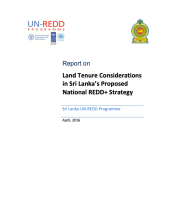/ library resources
Showing items 1 through 9 of 13701.Nine Latin American countries plan to use silvopastoral practices—incorporating trees into grazing lands—to mitigate climate change. However, the cumulative potential of scaling up silvopastoral systems at national levels is not well quantified.
Belowground roles of agroforestry in climate change mitigation (C storage) and adaptation (reduced vulnerability to drought) are less obvious than easy-to-measure aspects aboveground. Documentation on these roles is lacking.
A framework was developed to elucidate (1) the drivers of land degradation, (2) pressures, (3) local impacts and vulnerabilities and (4) adaptation strategies.
The complexity of spatial use has an impact on poverty and the development of slum settlements towards a decrease in environmental quality.
At the request of the Sri Lankan Government an assessment was designed and conducted as part of the development of the country’s national strategy on REDD+. The assessment involved applying criteria from the Voluntary Guidelines on the Responsible Governance of Tenure of Land, Fish
India is currently among the most affected countries by COVID19, recording over 6 million cases, by September 30 2020.
In this report the authors aim to assess and evaluate historic and current changes in land use and forestry at the national and sub-national level in Sri Lanka.
Climate warming and human actions both have negative impacts on the land cover of Mongolia, and are accelerating land degradation.
With growing global demand for food, unsustainable farming practices and large greenhouse gas emissions, farming systems need to sequester more carbon than they emit, while also increasing productivity and food production.
Paginación
Land Library Search
Through our robust search engine, you can search for any item of the over 73,000 highly curated resources in the Land Library.
If you would like to find an overview of what is possible, feel free to peruse the Search Guide.






